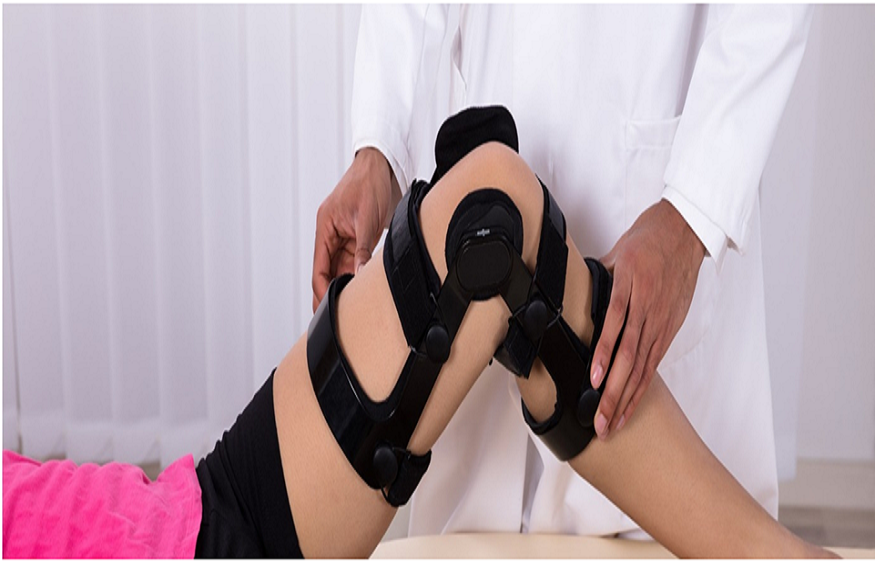We can all agree that one of the most injured ligaments of the knee is the ACL. In most cases, half of the injuries happen with damage to articular cartilage and meniscus or other knee ligaments. They are sprains and graded on a severity scale depending on different factors:
-
Grade One –
Mildly damaged ligament means it is slightly stretched, but you can keep everything stable
-
Grade Two –
We are talking about stretching the ligament to a point where it is loose. Most surgeons consider it a partial rupture or tear.
-
Grade Three –
Finally, the worst aspect of the sprain is a complete ligament tear. It is torn directly off the bone, making the joint unstable.
As soon as you check here, you will learn more about knee ligament injuries. You should know that partial tears of ACL or anterior cruciate ligament, meaning in most cases, we are talking about near complete or complete.
Partial Tear vs. Complete Tear
In partial tear, the outlook is, in most cases,sound. You will recover and rehabilitate in the next three months after you experience it. Of course, some patients with partial tears may have instability issues. Close clinical follow-up and complete aspects of physical therapy will help you identify patients with unstable knees due to partial issues.
When it comes to complete ACL tears, you should know they require surgery because the chances are low that you will cure the issue without it. After a complete tear, you cannot participate in pivoting or cutting types of sports, while others will have instability during everyday activities such as walking, among other things.
Most ACL injuries go together with meniscus damage or other ligament tears. Besides, related damages can happen in patients due to instability issues with an ACL injury. Only people with strong leg muscles can maintain stability depending on weight and physical aspects.

When it comes to chronic instability, most patients will have meniscus damage a few years after the initial problem. Besides, articular cartilage lesions are more common in patients who have lived with ACL rupture for more than ten years.
Non-Surgical Treatment
Progressive rehabilitation and physical therapy can restore the knee to a point where you can prevent instability. At the same time, you may start wearing a hinged knee brace for additional support, which is an essential factor to remember.
When you have other injuries with the ACL tear, surgical treatment is one of the best ways to return to previous state. However, some people choose to avoid the invasive procedures altogether. Still, most people who avoid surgery tend to suffer an additional injury due to instability issues.
Having an isolated ACL tear requires nonsurgical management, which can be successful in patients with the following:
- No instability symptoms and partial tears
- People with complete tears who do not experience knee instability because they are not active in high-demand sports
- People who live inactive lifestyles and do light manual work
Studies have shown that children with ACL tears are more likely to damage cartilage and meniscus without surgery, which is anessential factor to remember. It is vital to talk with an orthopedic surgeon after entering this website: https://ortopedistaraulrodas.com/, which will help you to learn about the benefits and risks of invasive procedures.
Surgical Treatment
ACL ruptures do not require stitches or sutures because they will fail as time goes by. Recent studies have shown that certain types of tears require various techniques to promote healing. Still, long-term studies have not supported this theory.
In most cases, the ACL rupture requires a substitute graft coming from a tendon, such as:
- The patellar tendon, Achilles tendon, gracilis, semitendinosus, or allografts from potential donors
- Quadriceps, hamstring, and patellar autograft, meaning it comes from a patient
Activity levels should determine whether you need surgery or not, which is vital to remember. If you are an active adult patient involved in jobs that require turning, pivoting, and hard-cutting, or if you perform heavy manual work, you should undergo a surgery. The same goes for older patients, who are most often excluded from invasive procedures.
When it comes to adolescents and children with ruptures, the reconstruction will create a potential risk of growth plate injuries, which may lead to bone growth issues. Still, a few studies have shown that early reconstruction is essential because delay can lead to a more significant rate of future cartilage and meniscus problems.
If you are a patient with a torn ACL who experiences severe functional instability, the chances are high that you will also damage other areas. Therefore, reconstruction is essential for preventing further issues from happening.
Similarly, as mentioned above, the rupture also comes with other problems, including collateral ligaments, cartilage, and meniscus issues or a combination of all the above. The worst injury is an unhappy triad, common in skiers and players, and features injuries to MCL, ACL, and medial meniscus.
In combined injuries, surgeries are necessary due to better outcomes eventually. Everything mentioned above is fixable; while the healing may require some time, you will end up with a fully functional knee afterward.
Patellar Tendon Autograft
You should know that patellar tendon autograft comes from the middle third of your tendon, with a shin and bone plug from a kneecap. It is the best material or gold standard graft for most orthopedic surgeons, especially if you are a high-demand athlete.
Studies have compared the outcomes of hamstring and patellar tendon autograft, and you should know that the graft failure rate was lower in patellar tendon reconstructions. As a result, you will get better knee looseness and laxity outcomes than other options.
Rehabilitation
Physical therapy is essential to ACL surgery, meaning the exercises should start right after the invasive procedure. Everything depends on your dedication and pain management because it should be rigorous physical therapy for standing on your leg.
During the first ten days afterward, the wound should be dry and clean, meaning early emphasis should help you regain the ability to restore quadriceps control and straighten the knee. Besides, it would be best if you iced it regularly to reduce pain and swelling.
The main idea is to regain the full range of motion and strengthen the hamstring and quadriceps muscles, preventing swelling and severe pain.



